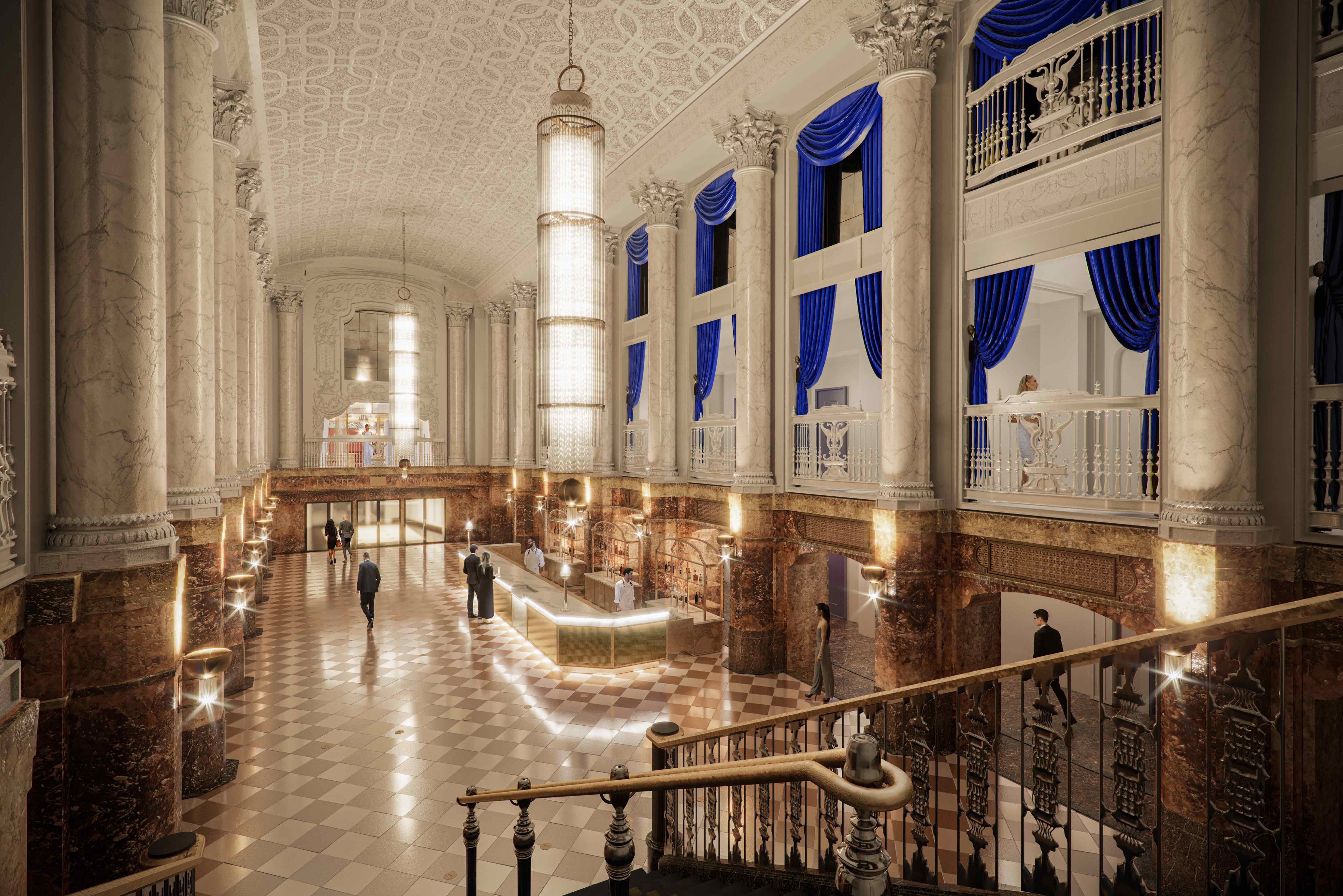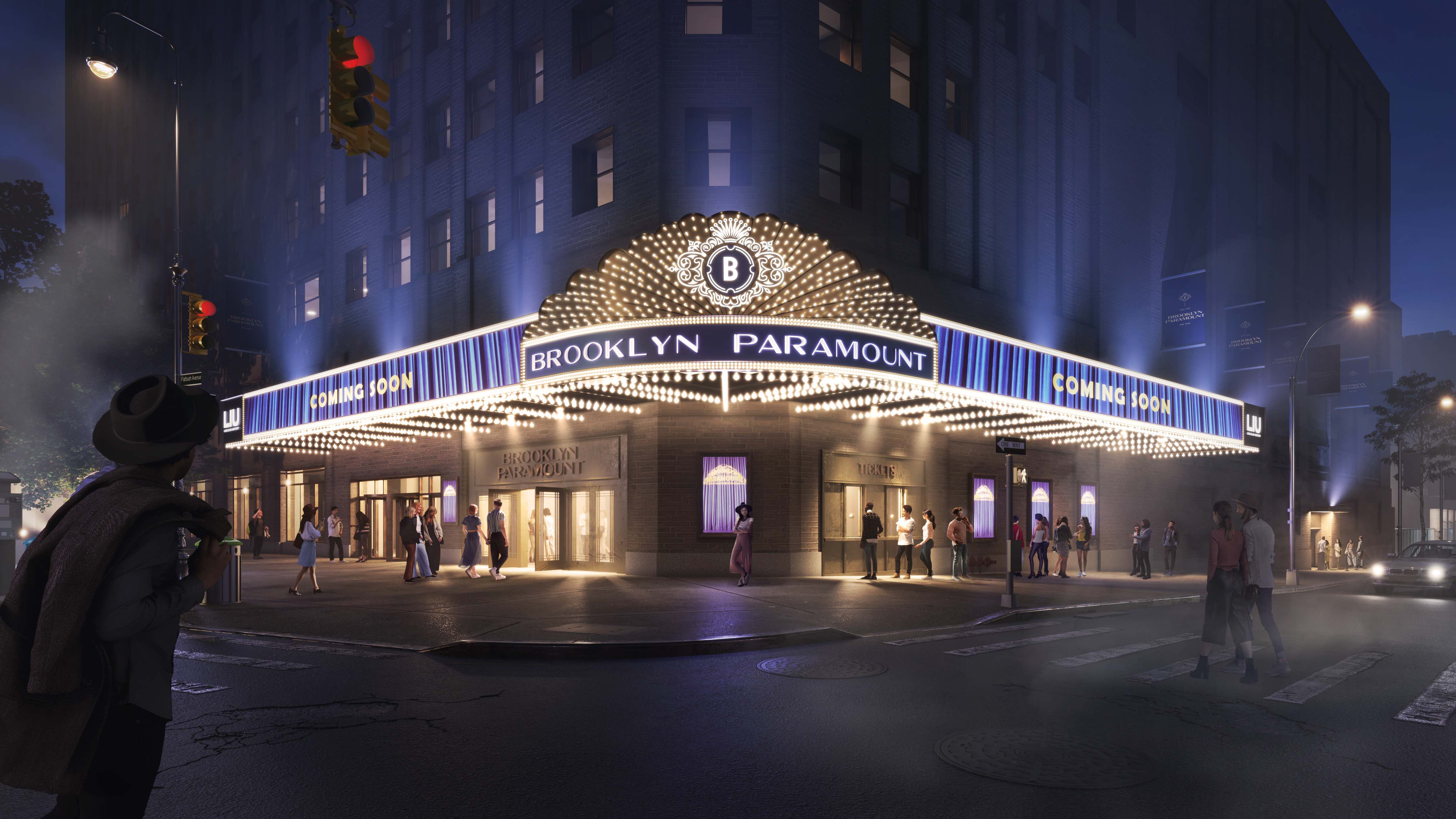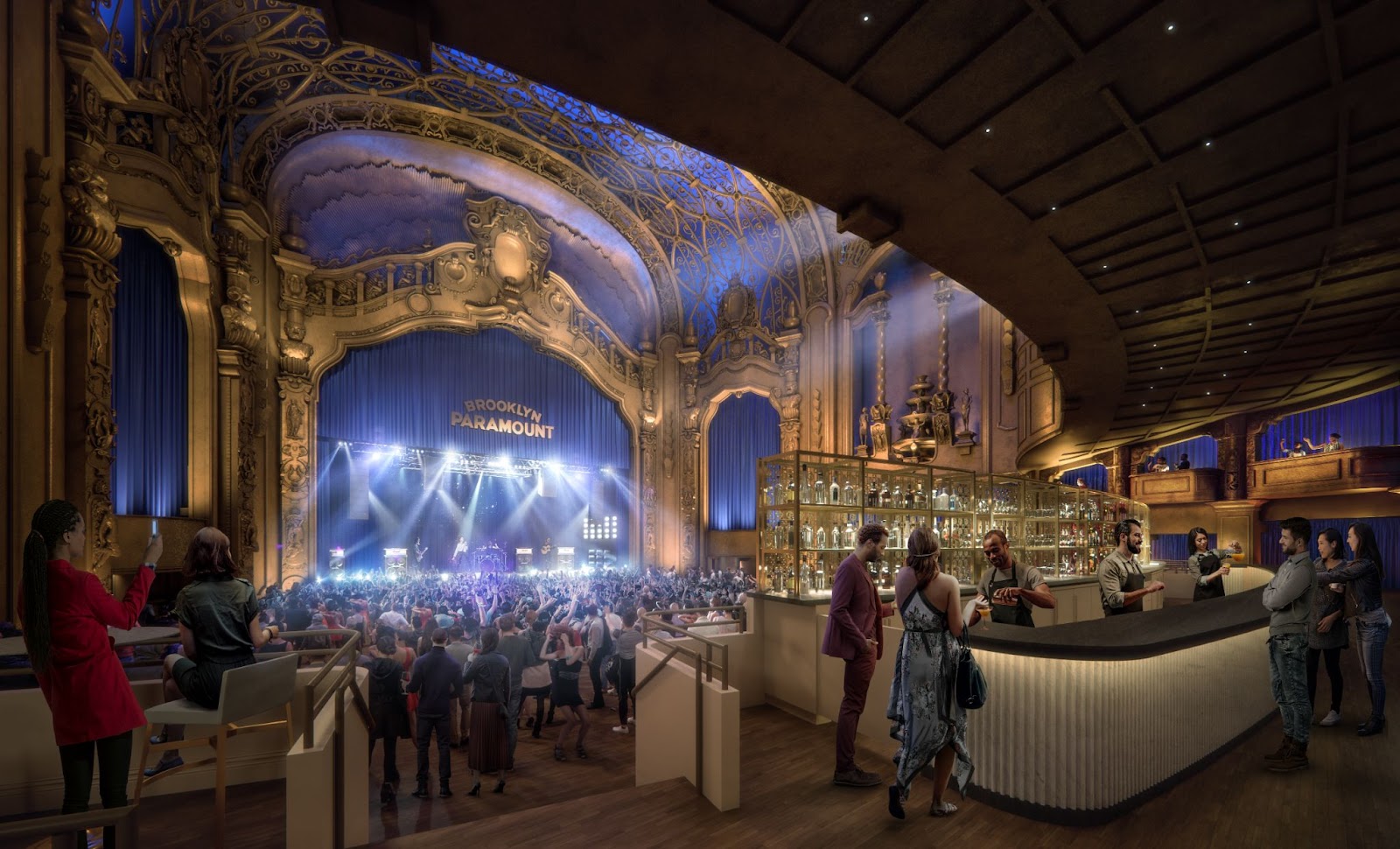The renovation of the iconic Brooklyn Paramount Theater restored the building to its original purpose as a movie theater and music performance venue. Long Island University had acquired the venue in the 1960s and repurposed it as the school’s basketball court.
The recently completed restoration preserved historical features while adapting to modern needs. Opened in 1928, the theater was renowned for hosting the world's first talking movies and showcasing legendary musical performers like Buddy Holly & The Crickets, Chuck Berry, Duke Ellington, and Ella Fitzgerald. Redesigned for owner Live Nation, it now accommodates contemporary artists while paying homage to its storied past.
Designed by Arcadis, the renovation incorporated a comprehensive marquee redesign, drawing inspiration from the original structure. The intricately designed ceiling was constructed with plaster, with special attention given to ensure its structural stability so that it is capable of withstanding intense bass vibrations of concerts. Collaborating with a lighting designer, the team illuminated the upper plaster dome, transforming it into a beautiful canvas enveloping the space in colored light to enhance the concert experience.
New life for Brooklyn Paramount Theater
By examining the venue’s original design and historical drawings from the 1920s, the design team salvaged intricate details and restored original architecture altered over the past century. The ticket lobby has been reimagined to align with modern aesthetics and security standards.
Upon entering the 2,700-capacity music hall, patrons are greeted by the featured bar before they encounter a sloped floor designed for optimal viewing. Old classrooms on the upper balcony were turned into mechanical areas to provide the space with modern comfort. The balcony’s original rococo columns with a colonnade, signaling the top of the venue, were replicated.
The second-level balcony boasts exclusive boxes and “Ella's VIP lounge,” paying homage to Fitzgerald's iconic performances in the 1950s. The intimate atmosphere of the VIP lounge showcases a small stage wrapped in a warm burnt-red drape. Over four dozen glistening gold disco balls add an additional level of sparkle to the space to set it apart from the rest of the venue.
Owner and/or developer: Live Nation / Long Island University
Design architect: Arcadis
Architect of record: Arcadis
MEP engineer: Highland Associates
Structural engineer: Thornton Tomasetti
General contractor/construction manager: Schimenti Construction Company



Related Stories
| Aug 11, 2010
Silver Award: Please Touch Museum at Memorial Hall Philadelphia, Pa.
Built in 1875 to serve as the art gallery for the Centennial International Exhibition in Fairmount Park, Memorial Hall stands as one of the great civic structures in Philadelphia. The neoclassical building, designed by Fairmount Park Commission engineer Hermann J. Schwarzmann, was one of the first buildings in America to be designed according to the principles of the Beaux Arts movement.
| Aug 11, 2010
Financial Wizardry Builds a Community
At 69 square miles, Vineland is New Jersey's largest city, at least in geographic area, and it has a rich history. It was established in 1861 as a planned community (well before there were such things) by the utopian Charles Landis. It was in Vineland that Dr. Thomas Welch found a way to preserve grape juice without fermenting it, creating a wine substitute for church use (the town was dry).
| Aug 11, 2010
Team Tames Impossible Site
Rensselaer Polytechnic Institute, the nation's oldest technology university, has long prided itself on its state-of-the-art design and engineering curriculum. Several years ago, to call attention to its equally estimable media and performing arts programs, RPI commissioned British architect Sir Nicholas Grimshaw to design the Curtis R.
| Aug 11, 2010
Silver Award: Hanna Theatre, Cleveland, Ohio
Between February 1921 and November 1922 five theaters opened along a short stretch of Euclid Avenue in downtown Cleveland, all of them presenting silent movies, legitimate theater, and vaudeville. During the Great Depression, several of the theaters in the unofficial “Playhouse Square” converted to movie theaters, but they all fell into a death spiral after World War II.
| Aug 11, 2010
Biograph Theater
Located in Chicago's Lincoln Park neighborhood, Victory Gardens Theater Company has welcomed up-and-coming playwrights for 33 years. In 2004, the company expanded its campus with the purchase of the Biograph Theater for its new main stage. Built in 1914, the theater was one of the city's oldest remaining neighborhood movie houses, and it was part of Chicago's gangster lore: in 1934, John Dillin...
| Aug 11, 2010
Top of the rock—Observation deck at Rockefeller Center
Opened in 1933, the observation deck at Rockefeller Center was designed to evoke the elegant promenades found on the period's luxury transatlantic liners—only with views of the city's skyline instead of the ocean. In 1986 this cultural landmark was closed to the public and sat unused for almost two decades.
| Aug 11, 2010
Putting the Metal to the Petal
The Holocaust and Human Rights Center of Maine was founded in 1985, but the organization didn't have a permanent home until May 2008. That's when the Michael Klahr Center, which houses the HHRC, opened on the Augusta campus of the University of Maine. The design, by Boston-based architects Shepley Bulfinch Richardson & Abbott, was selected from among more than 200 entries in a university-s...
| Aug 11, 2010
Jefferson Would Be Proud
The Virginia State Capitol Building—originally designed by Thomas Jefferson and almost as old as the nation itself—has proudly served as the oldest continuously used Capitol in the U.S. But more than two centuries of wear and tear put the historical landmark at the head of the line for restoration.
| Aug 11, 2010
Let There Be Daylight
The new public library in Champaign, Ill., is drawing 2,100 patrons a day, up from 1,600 in 2007. The 122,600-sf facility, which opened in January 2008, certainly benefits from amenities that the old 40,000-sf library didn't have—electronic check-in and check-out, new computers, an onsite coffeehouse.
| Aug 11, 2010
American Tobacco Project: Turning over a new leaf
As part of a major revitalization of downtown Durham, N.C., locally based Capitol Broadcasting Company decided to transform the American Tobacco Company's derelict 16-acre industrial plant, which symbolized the city for more than a century, into a lively and attractive mixed-use development. Although tearing down and rebuilding the property would have made more economic sense, the greater goal ...







